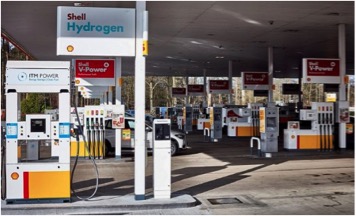Motorway nodes or local hubs?
This blog post has been inspired by the thoughtful input from the Riversimple Design Forum on the topic of refuelling. Having received a plethora of comments and queries from all over the UK and Europe we thought the question of hydrogen infrastructure, often cited as the main barrier to the uptake of hydrogen vehicles, deserved a Riversimple explanation.
First, some context; there are currently 17 active hydrogen refuellers in the UK with a further 5 in the immediate pipeline. Behind these projects are a mixture of universities, manufacturers and fuel providers. Most new projects are being built along motorways and trunk roads with the aim of linking towns and cities together, supporting intercity driving and, by default, longer journeys. As if to prove the point, Toyota drove one of its Mirais the length of the country refuelling at 4 different locations. Great. There is undoubtedly a need for these types of journeys, whether a UK based holiday or a job that requires a lot of driving, but with the average car journey lasting only 22 minutes (DfT, 2017) the majority of journeys are not catered for in this model.
While any additional hydrogen refueller is wholeheartedly welcomed, we believe that the key to eliminating the environmental impact of personal transport is closer to home, providing for the 94% of all journeys that are under 25 miles. When asking our Design Forum their refuelling habits, 79% said that they timed refuelling with other regular activities such as shopping or commuting and 70% used the same one or two stations. In contrast only 1% of people reported refuelling at motorways ‘often’ whereas 86% of people said they would ‘never’ refuel at a motorway or ‘only if they had to’.
 One of the benefits of a hydrogen electric vehicle such as the Rasa is that it can be refuelled in the same way as a conventional petrol or diesel car. Just a simple pump on a forecourt, hydrogen refuellers have the opportunity to be located in familiar locations such as supermarket car parks and local service stations. Our data shows that convenience is king and convenience means local; local to your home, your work or your supermarket. A 300 mile range means that you only need a reason to come into town once a week or so and you’re sorted – in fact, with the Rasa you fill up and drive away without paying!
One of the benefits of a hydrogen electric vehicle such as the Rasa is that it can be refuelled in the same way as a conventional petrol or diesel car. Just a simple pump on a forecourt, hydrogen refuellers have the opportunity to be located in familiar locations such as supermarket car parks and local service stations. Our data shows that convenience is king and convenience means local; local to your home, your work or your supermarket. A 300 mile range means that you only need a reason to come into town once a week or so and you’re sorted – in fact, with the Rasa you fill up and drive away without paying!
 We have installed the 17th hydrogen refueller in the UK (2nd in Wales). We chose the location in Abergavenny because it is located in the town’s main car park, next to the bus station and a short walk from the train station. It is in the middle of the town which offers a weekly market and a well stocked high street (yes, they still exist), a supermarket and theatre. Most of the people participating in the Riversimple Clean Mobility trial already pass within 5 miles of the refueller weekly, if not daily.
We have installed the 17th hydrogen refueller in the UK (2nd in Wales). We chose the location in Abergavenny because it is located in the town’s main car park, next to the bus station and a short walk from the train station. It is in the middle of the town which offers a weekly market and a well stocked high street (yes, they still exist), a supermarket and theatre. Most of the people participating in the Riversimple Clean Mobility trial already pass within 5 miles of the refueller weekly, if not daily.
We believe that this model of smaller units based in local communities offers a solution to the chicken and egg problem – which has to come first, cars or filling stations? The motorway pumps will hardly ever see a car (there are currently only 93 hydrogen cars on the roads in the UK), whereas the Riversimple pump will have a captive fleet of 20 vehicles all refuelling approximately once a week. Let’s see the new filling stations being supported by the government going into the heart of the community and build up a nationwide network of vehicles and filling stations hand in hand.
If you would like to join the Riversimple Design forum and be part of the discussion then please register HERE
